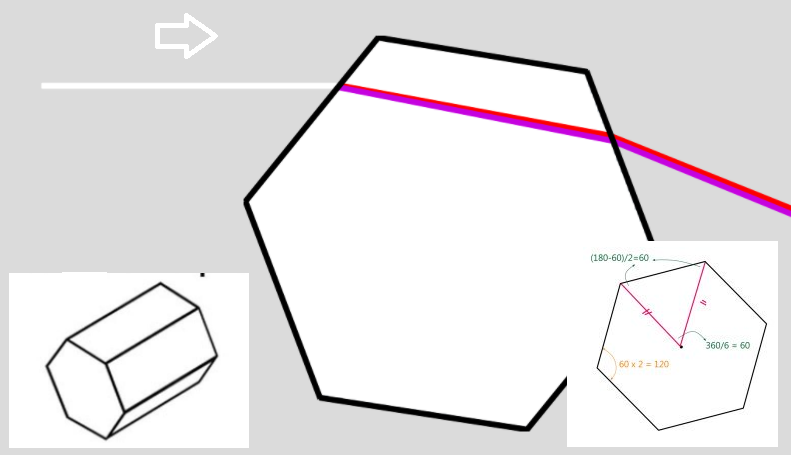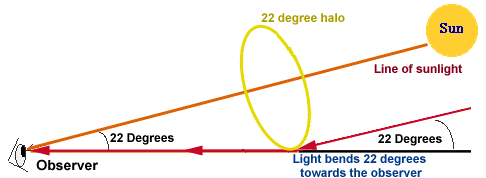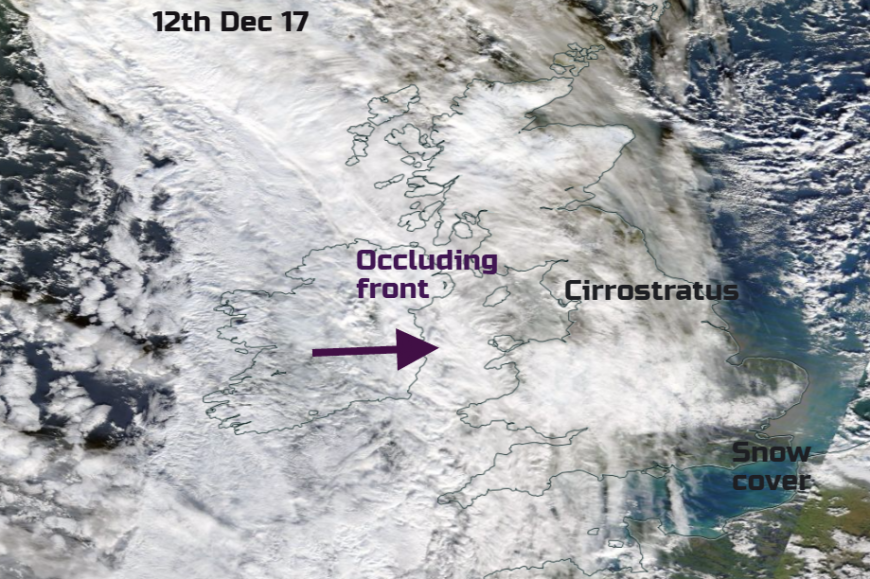
Haloes
On days or nights which start off clear you may spot a perfect wide circle around the sun or the moon. Thin cloud is filtering in which contains ice crystals and this layer with all its tiny bits changes the path of the light and causes the ring or halo.
These optical phenomena area formed by refraction or reflection of sunlight or moonlight. A ring around the moon, means rain soon. Cirrostratus can be so thin especially at night that only sign it is there is the halo. Rainbow colours can be seen within the lit up areas by day, a kind of iridescence as the white light is split up into different colours.
It’s all to do with the shape of the ice crystals, how the line up within the cloud and which face of the crystal the light passes thorugh. You may also get other areas of light away from the halo. A mock sun or sun dog also know as parhelia (Greek for with the sun).
High Cirrus or cirrostratus clouds are made up of ice crystals. Usually, these are hexagonal in form and can be elongate in columns or like a cut off layers, slices or plates. You can get different sizes of faces, the hexagon and also depth of prism but the angles inside are always the same. The two end faces are 90 degrees to the six sides and prism side faces always incline at 60 degrees to each other

The flatter slice, plate crystals float down like leaves, horizontal to the ground. The column-like crystals lay down with their long sides horizontal.
This widespread orientation of the crystals leads to halos and depending on which faces the light moves through; then you can get other optical phenomena too. As Light refracts through hexagonal ice crystals, you get a 22-degree halo. That is the angle between your view of the sun and your line of sight to the radius of the halo.

Sun dogs -Either side of the sun (which you shouldn’t be looking at directly ) you might see one or two mock suns. They will be level with the sun, but as the cloud thickens up and the halo becomes more obvious the parhelia disappear. Red light is refracted less strongly than blue, and the inner, sunward, edges of sundogs are therefore red-tinged. They are formed by refraction from the vertical side faces of the hexagonal prism crystals. You may have to look quite far from the sun to spot these.
Sun pillar- a vertical line of light above or below a low sun. Rather than being caused by refraction, thee are just light reflecting off the hexagonal ice crystals. This will be the same colour as the sky at sunset or dawn.
CZA Circumzenithal arc- another refraction event with a low-ish sun. It is like an inverted quarter rainbow high above your head, the zenith being the highest point in the sky. It can be known as an ice rainbow. Rays passing between one of the large horizontal faces and a side face, where angle is 90 degrees form arcs

The Twitter photos from mid December relate to this Satellite image with cold Arctic air over the North Sea and eastern Britain, after a snowy two days. Then an Atlantic from was edging in from the west, throwing the cirrostratiform cloud and ice crystals ahead.
Loading recent activity...